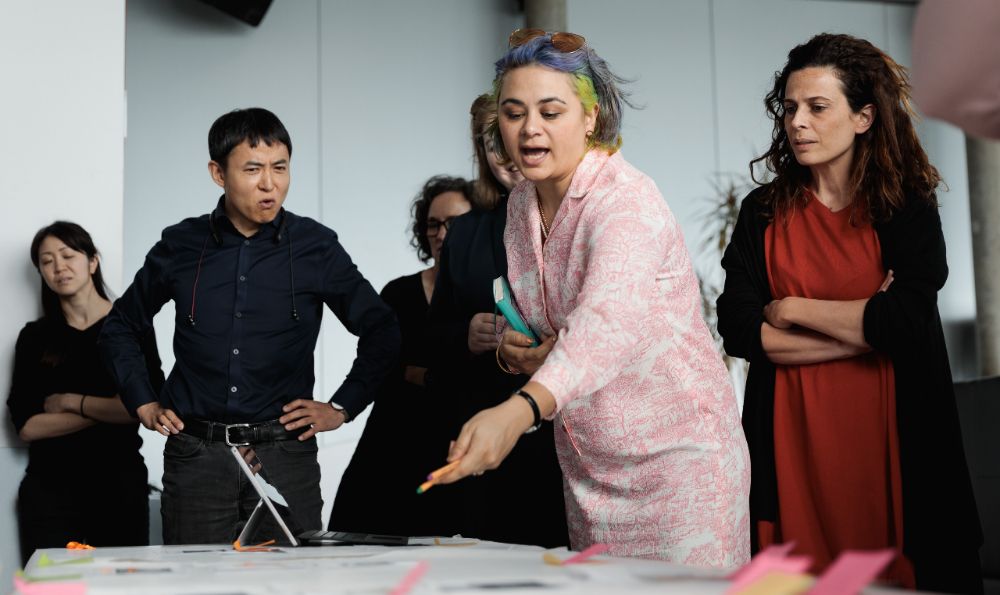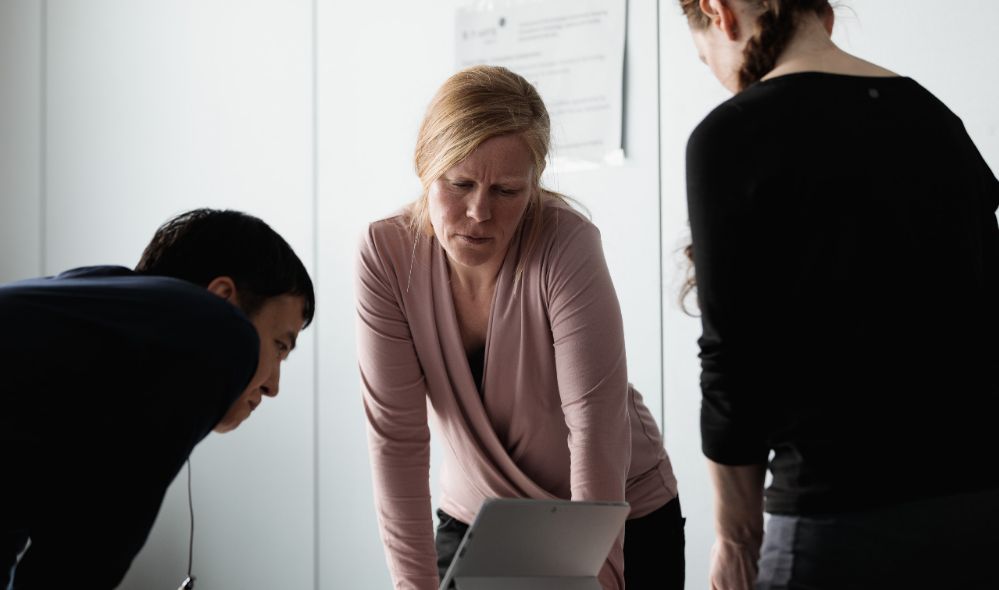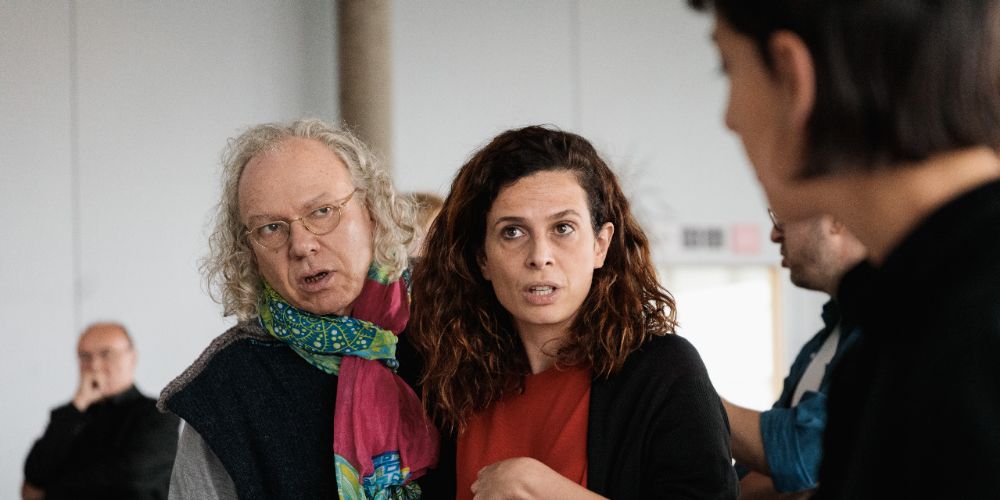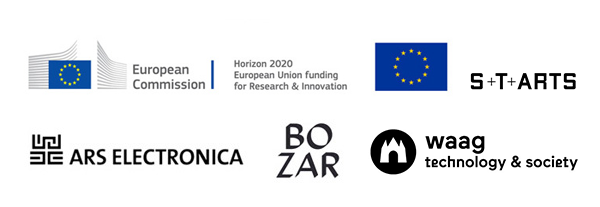In the last two hours of the jury session, things get down to brass tacks. There is a fast-paced assessment of the contents, merits, and weak points of the finalists’ projects, of how their themes relate to the Zeitgeist, and whether they are consistent with the founding idea of the STARTS Initiative. Should we think big, or favor small step-by-step projects? How many women are involved in the projects? All eyes are on the clock and everyone is asking: can we agree or is there more discussion? And suddenly the answer is that we can agree, and within seconds, the winners are chosen for the first category. It’s a bit like the climax of a story that builds up slowly and ends with a bang.
By the way, the winning projects are not being announced here – that will happen on May 20 at a press conference. We spoke to a jury member about the jury deliberations, the atmosphere, the submissions and trends as well as the importance of these two categories in particular. Daehyung Lee is a South Korean art critic and curator who is hard to avoid in the Korean art world.

Credit: vog.photo
How is the jury session going?
Daehyung Lee: I’ve participated in many juries before, especially in the field of contemporary art, and the process is always an exciting one. You meet colleagues and swap ideas, at the same time there’s this huge range of submissions. We now have 30 nominations to decide from.
What’s really a shame is: I keep hoping for submissions from Korea, but there are few interdisciplinary approaches there. There is contemporary art and there are engineers, but there are no connections between them. The interdisciplinary approaches definitely need to be intensified.

Credit: vog.photo
In the course of the jury session you see a lot of submissions. What are the trends this year?
Daehyung Lee: Last year there were a lot of submissions about plastic and about life in the oceans. Those have decreased; this year it’s more about the soil, bacteria, cryptocurrencies, surveillance, the dark side of Artificial Intelligence. Aspects of biotech and the development of new materials are important as well.

Credit: vog.photo
Where do you see the potential of the two categories? Artistic Exploration and Innovative Collaboration?
Daehyung Lee: The fast pace of technology, the complexity of society and the uncertainty of the future are the difficult fundamentals of our time. That can’t be solved by one person, one nation, or one company. We have to work together. We have to look at the problems from different angles, different points of view, through different people, disciplines and technologies. And different historical and cultural backgrounds also need to be taken into account. That’s why collaboration will be the keyword of our time, to make the future better.
Concerning artistic exploration: as soon as we jump onto the moving train of a given megatrend, we tend towards adaptation and conformist behavior. Many components of our world are closed systems, conceptually and physically. Economics and territory, for example. That’s exactly why we need artists who redirect the role and habitus of technology. Artistic explanations are truly important, they challenge outdated points of view and expand the limits of thought. Scientific or technological aspects can form a basis, but it’s immensely important to take the imaginative power of artists into account. Artistic ideas can serve as a source for both inspiration and mindfulness.
And here the circle closes: the limits must be expanded, completely different things must be thought of collectively and find common ground, otherwise true collaboration is impossible. Innovative collaboration and artistic discoveries are in a symbiotic relationship and cannot exist without each other.

Credit: vog.photo
S+T+ARTS = Science, technology, arts. What is so exciting about this particular combination?
Daehyung Lee: Three perspectives, three types are essential for the future. First we need politicians and marketers who collect and evaluate data. They stand for the past. We also need scientists who develop algorithms and logic. They represent the present. And artists who imagine something out of thin air and can communicate it to us. So the influence of the arts is our future!

Credit: vog.photo
STARTS is an initiative of the European Commission to foster alliances of technology and artistic practice that effectively implement European policymaking to nurture innovation and that benefit the art world as well. The focus is on people and projects that contribute to mastering the social, ecological and economic challenges this continent faces. Find more information about the jury here.

Art critic, curator, and POWER LEADER 2012 acclaimed by Forbes Korea, has been curating contemporary Asian art for the last 17 years. He curated Korean Eye Moon Generation in 2009 and its nomadic show until 2012 at Saatchi Gallery in London. Currently he leads Hyundai Motor’s ARTLAB and its global art partnerships that include MMCA’s Hyundai Motor Series to Tate Modern’s Hyundai Commission, LACMA’s The Hyundai Project, Bloomberg Brilliant Ideas. Most recently, he curated “Counterbalance: The Stone and the Mountain” at the Korean Pavilion, La Biennale di Venezia 2017 and the Max Mara Coats! Seoul in 2017. He holds an MA in Curatorial Studies from Columbia University in New York and has advised the interdisciplinary playground ZER01NE (2018), Gwangju Biennale (2016), Busan Biennale (2014) and Cheongju Craft Biennale (2013).
This project has received funding from the European Union’s Horizon 2020 research and innovation programme under grant agreement No 732019. This publication (communication) reflects the views only of the author, and the European Commission cannot be held responsible for any use which may be made of the information contained therein.

